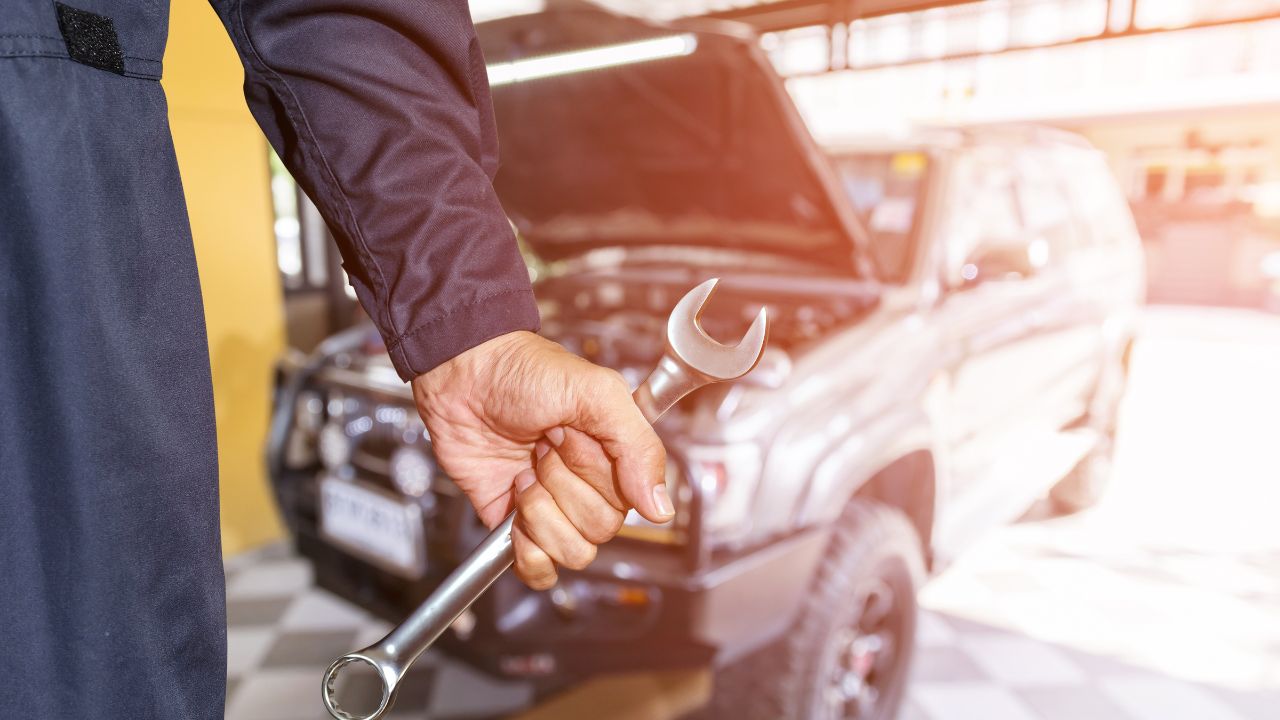
Massachusetts offers many different programs for auto mechanics. Make sure you look at them all if you want the best training. There are many programs that can be offered at somerville's high schools, including the MTTI Automotive Service Technie program and Toyota Technical Education Network (T-TEN).
MTTI Automotive Service Technician program
MTTI's Automotive Service Technie Program offers 900 hours hands-on training, as well information on how to earn the ASE certificate. Full-time students who are not employed as full-time workers can also do an internship in the auto industry. This gives them valuable experience in the real world and helps them get in touch with potential employers. A professional tool kit will be provided to students upon completion of their program. The Massachusetts Education Agency (MAEA) and ACCSC approve MTTI’s Automotive Service Technician Programs.

Somerville High School
Somerville High School (a public, four-year high school) is located in Somerville. The school offers many classes for high school students as well as those looking to enter the auto mechanic industry. The vocational programs allow students to further their education. Somerville High School offers classes in a variety of fields, including auto repair, welding, and welding.
ASE Student Certification
You can obtain ASE student certifiable in Massachusetts automotive school. The course consists of one or more tests that a student must pass to get their certification. The principal signs and prints a certificate. The certificate will be valid for 2 years from the date it was issued. ASE certification will help you get a job as an auto mechanic. It is also an excellent way to develop a professional reputation.
Toyota Technical Education Network (T-TEN) program
Toyota Technical Education Network (T-TEN), the best auto mechanic school in Massachusetts, might be a good choice. T-TEN offers industry-leading and tuition-free automotive technician training. It also offers a balance of classroom and practical work so that graduates can seamlessly transition into an automotive dealership's service department.

MTTI Automotive Technology program
There are many career opportunities for graduates of the MTTI Automotive Technology Program. They can become technicians, service managers, shop foremen, salespeople, or even management. The course includes both theory and practical learning in a fully-equipped auto shop. They will learn about electrical systems and tires as well how transaxles work. These courses are supplemented by instruction on computer-assisted mechanisms, New York State inspection requirements, and other topics.
FAQ
How can I fix my car as a hobby?
Take up a hobby in car repair if you have an interest. You can repair them, buy their parts, sell them, or just have fun with them. If you are looking for something new, this would be a great hobby.
It's difficult to make this a fulltime job. It requires a lot of hard work and dedication. It will also require a large amount of investment.
If you don't have any good reasons to be involved in cars, it may be better to just let it go.
What are the different types of jobs available in car mechanic?
Three main areas of employment are available for car mechanics:
-
Automotive repair shops
-
Dealerships
-
Independent garages
Automotive repair shops
It's where most people start to think about becoming a mechanic. It's also the easiest way you can get started. Either you can work in a shop that is owned by another person or start your own business.
If you choose to work at a store, you need to join a union. Once you're accepted into the union, you'll receive training from the union.
After the training, you will be ready to go and start your job.
Register with the government if you want to open your garage. Once you have registered, certain standards will be enforced.
After you register, you will be granted a license for your garage to operate.
You can sell spare parts or do minor repairs with your license. It won't permit you to fix serious engine problems.
Apart from selling spare parts, customers will also expect you to provide guidance and advice.
Dealership jobs
Most dealerships employ mechanics that specialize in one aspect of the vehicle. They might specialize in one area, such as brakes and tires.
However, dealerships may also employ general mechanics who are able to handle all aspects related to car repairs.
These positions often require applicants to undergo specific training before being allowed to work. Employers are able to choose which candidates will best suit their position.
Some dealerships even recruit graduates straight from university. These graduates are already familiar with basic mechanics and can therefore learn about cars.
Independent garages
Independent garages don’t have to be associated with any particular dealer. They are more focused on providing top-quality service.
Independent garages can pay higher wages because they aren't associated with any company. This means that these jobs are usually more lucrative than those at dealerships.
Independent garages don't necessarily make for better work environments. Many business owners prefer to own their businesses and not delegate the responsibility to others.
This could lead to you working long hours with little control over your day.
Also, expect to make lower wages than if your job was at a dealership.
It's possible to switch between jobs. You can switch jobs easily if you are interested in working at a dealership. Simply ask your employer if they would be open to hiring you as a mechanic.
If you prefer to work in an independent garage, you might consider applying directly to its owner.
The bad news is that finding a new job isn't always easy. There are many other factors that can influence your earnings.
This could include the type of vehicle that you are working on and whether or not you charge an additional for labor.
How long is an apprenticeship for an automotive mechanic?
An automotive mechanic apprenticeship takes around three years to complete. This includes two years at school and two years working as an apprentice. The first year is spent learning all aspects of the trade, including theory, practical skills, and safety procedures. You'll also learn how tools can be used safely and efficiently during this year. After the completion of the first year, you will spend another year on the job training. Here you'll gain valuable experience in different trades. These years will offer you the opportunity to attend formal classes.
The last year of the program is dedicated to gaining certification and qualifications in the field. These include NVQs or National Vocational Qualifications. These are earned after passing exams that cover specific topics in the industry. The HNCs (Higher National Certificates), on the other hand, cover general subjects like customer service and management. Finally, there are City & Guilds certificates that are offered for those who wish to become qualified in certain trades.
Statistics
- According to the BLS, total auto technician employment is expected to exceed 705,000 by 2030. (uti.edu)
- There were 749,900 jobs available for automotive service technicians and mechanics in 2016, which is expected to grow by six percent through 2026. (jobhero.com)
- The U.S. Bureau of Labor Statistics (BLS) reports that the job outlook for automotive service technicians and mechanics is expected to decline by 4% from 2019 to 2029. (indeed.com)
External Links
How To
How to properly diagnose your vehicle for repair
First, look at the symptoms of your car to determine if it needs repair. Next, you can follow these steps in order to diagnose your car.
-
Check engine lights. The dashboard light indicators, including the engine light, oil pressure gauge, battery light indicator, coolant temperature gauge and RPM gauge, should be checked. If they have been flashing for more days than usual, it could be a sign that something is wrong with the vehicle.
-
Inspect the tire treads. Tires can become worn and cause problems in handling and braking. You should inspect the treads on your wheel. You should ensure that they are clean and smooth. This can be done by removing the wheels from the vehicle and taking them off. Check the tread condition with a flashlight.
-
You should always monitor the level brake fluid. You must always monitor the level of your brake fluid. This ensures that your brakes work properly. If the brake fluid level is low, your brakes might fail when you apply pressure to them.
-
The suspension system should be tested. Vehicles usually have a suspension system that helps absorb shocks and vibrations while driving. It improves control and allows for smoother accelerations or decelerations. A suspension problem can cause your vehicle to feel wobbly and shake uncontrollably. If you are unsure if your vehicle is suffering from a suspension problem, put weight on the front and rear axles to check the movement.
-
Examine the steering column. The steering column connects the steering wheel to all other components of the vehicle. Many accidents can cause damage to steering columns. If yours feels loose or shaky, you should replace it.
-
Observe the exhaust pipes. Exhaust pipes help move gases from the combustion chamber to the atmosphere. Your cabin will be effected if your exhaust pipe cracks or leaks. You should also fix any bent tailpipes immediately.
-
Check under the hood. Check under your hood for any unusual or missing components. You could have fluids leaking from the engine. Also, professional technicians should be called if you detect an unusual smell coming out of your engine compartment.
-
It is important to inspect the air filter. The outside environment can collect dust and other debris in your vehicle's air filters. Dirty air filters can cause your vehicle to run poorly. Replace your air filter regularly.
-
Check the fan belt. Your vehicle's fanbel is what connects the engine and the transmission. If it breaks, the engine won't turn over. Replacing the belt is simple. You only need a screwdriver or pliers to replace your belt.
-
The radiator hose and hoses should be checked. The radiator hose transports water from radiator to engine. It can crack or become damaged and leak hot liquid onto an engine. To repair the leaky hose, all you need is a pair if needle-nosepliers.
-
Be sure to inspect your windshield wipers. Windshield wipers use electricity to remove snow and rain. If they stop working, they could leave streaks on your window glass. The solution is to change the washer fluid.
-
Check the battery cables. Your car's electrical system is powered by batteries. When you replace batteries, make sure to disconnect the negative cable first. Failure to do so can damage your alternator.
-
Make sure your headlights are working properly. Headlights are used to illuminate the road ahead. They can make it difficult to see if they stop working. To determine if your bulbs are out of date, check them.
-
Always check your lights. The lights are there to warn other drivers if they approach you at night. It could cause distraction and even lead to an accident if it doesn't work.
-
Check your brakes. Before you get in a car accident, your brakes will be slowing down your vehicle. If the brakes fail to work correctly, your car could lose control and collide with another vehicle.
-
Check the oil regularly. The oilkeeps your engine lubricated. It helps keep metal parts from getting too worn down. Changing the oil every month is recommended.